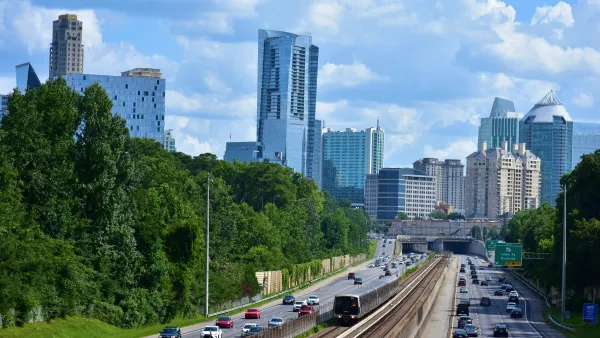The transportation reauthorization bill will be hotly debated this fall on at least two fronts - finding a sustainable funding source and apportioning the revenues. The 18.4 cent gas tax, its funding source, declined 33% due to inflation since 1993.
"The federal transportation bill could spend as much as $450 billion on road and transit projects over the next six years.
The trust fund is insolvent in large part because, for the second year in a row, Americans are driving less, and when they buy less gas, gasoline tax revenue declines. Last year the decline in purchases was attributed to record gas prices, and this year people are driving less because of the recession. At the same time, taxes collected from truck sales have fallen sharply, eroding another source of revenue.
While several business groups, transportation experts and lawmakers in both parties have called for raising the gasoline tax to meet transportation needs, the Obama administration has made it clear that it opposes raising the tax in a recession.
"The administration has inherited a system that can no longer pay for itself," Transportation Secretary Ray LaHood said Thursday at a hearing in the House, where he pledged to act this summer to address the expected shortfall. "We must think creatively as we search for sustainable funding mechanisms."
A federal commission recently recommended raising the tax by 10 cents a gallon, but said that the nation should ultimately devise a way to tax people based on how many miles they drive, not on how much gasoline they use."
As if preventing the Trust Fund from going bankrupt is not enough of a problem, groups including Transportation for America, the National Association of Realtors and AARP are calling for greater equity in apportioning the funds to transit which only receives 20% of revenues.
CQ Politics: Push for More Transit Funding Could Spark Transportation Spending Battle:
"If the bill starts looking more negative on highways, then users that have been supportive of fuel tax increases would turn their back on it," said Greg Cohen, chief executive of the American Highway Users Alliance. "There is potential that the whole bill could be slowed down here."
Thanks to Mark Boshnack
FULL STORY: Congress Grapples, Again, With How to Pay for Transportation Projects

National Parks Layoffs Will Cause Communities to Lose Billions
Thousands of essential park workers were laid off this week, just before the busy spring break season.

Retro-silient?: America’s First “Eco-burb,” The Woodlands Turns 50
A master-planned community north of Houston offers lessons on green infrastructure and resilient design, but falls short of its founder’s lofty affordability and walkability goals.

Delivering for America Plan Will Downgrade Mail Service in at Least 49.5 Percent of Zip Codes
Republican and Democrat lawmakers criticize the plan for its disproportionate negative impact on rural communities.

Test News Post 1
This is a summary

Test News Headline 46
Test for the image on the front page.

Balancing Bombs and Butterflies: How the National Guard Protects a Rare Species
The National Guard at Fort Indiantown Gap uses GIS technology and land management strategies to balance military training with conservation efforts, ensuring the survival of the rare eastern regal fritillary butterfly.
Urban Design for Planners 1: Software Tools
This six-course series explores essential urban design concepts using open source software and equips planners with the tools they need to participate fully in the urban design process.
Planning for Universal Design
Learn the tools for implementing Universal Design in planning regulations.
EMC Planning Group, Inc.
Planetizen
Planetizen
Mpact (formerly Rail~Volution)
Great Falls Development Authority, Inc.
HUDs Office of Policy Development and Research
NYU Wagner Graduate School of Public Service




























